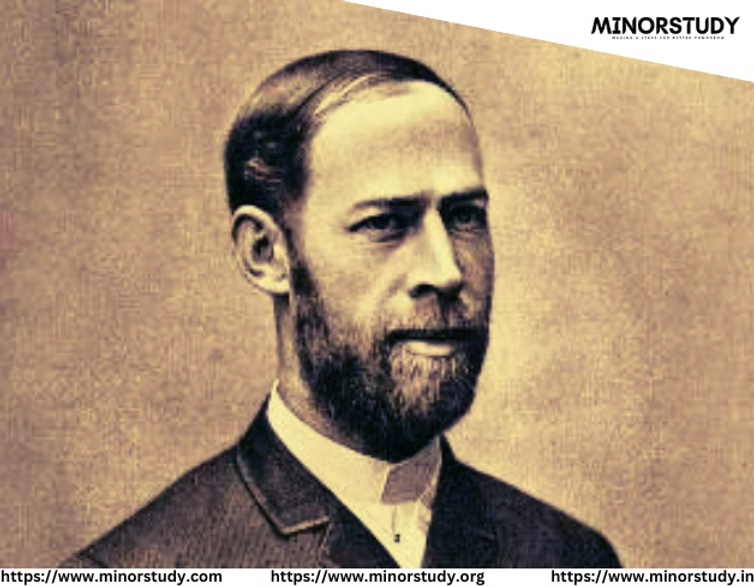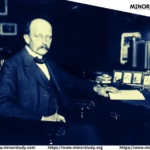Heinrich Rudolf Hertz: Pioneer of Electromagnetic Waves
Full Name: Heinrich Rudolf Hertz Born: February 22, 1857, Hamburg, Germany Died: January 1, 1894, Bonn, Germany Nationality: German Field: Physics Known For: Discovering and demonstrating the existence of electromagnetic waves Awards: None during his lifetime, but his work laid the foundation for modern electrical engineering and telecommunications.
About Heinrich Rudolf Hertz
Heinrich Hertz was a German physicist who is most famous for his groundbreaking experiments in the field of electromagnetism. He proved the theoretical existence of electromagnetic waves and demonstrated that light and radio waves are essentially the same phenomena. His work directly contributed to the development of radio, television, and wireless communication.
Major Contributions
Discovery of Electromagnetic Waves:In the late 1880s, Hertz conducted a series of experiments to prove that electromagnetic waves existed. He succeeded in generating and detecting these waves in the laboratory, thus confirming James Clerk Maxwell’s theoretical predictions about the nature of light and electricity.
Hertzian Waves:Hertz discovered that electromagnetic waves could be transmitted through space, and that they behaved similarly to light waves. He produced Hertzian waves (radio waves), demonstrating their properties like reflection, refraction, and polarization. This discovery confirmed that light and radio waves were part of the same electromagnetic spectrum.
Hertzian Oscillator:Hertz built an apparatus that could generate oscillating electrical currents, which produced the electromagnetic waves. This oscillator became the basis for future technologies, including radio transmitters.
Photoelectric Effect (Indirect Contribution):Though Hertz did not directly discover the photoelectric effect, his work with electromagnetic waves influenced later experiments on light. Albert Einstein would later build on Hertz’s findings when he explained the photoelectric effect, a critical development in quantum theory.
Historical Significance
Hertz’s experiments with electromagnetic waves revolutionized our understanding of the electromagnetic spectrum, which laid the foundation for technologies such as radio and television. His work also contributed to the development of wireless communication, a technology that has become ubiquitous in the modern world.
Timeline
1857: Born in Hamburg, Germany.
1880: Earned his PhD in physics from the University of Berlin.
1886–1889: Conducted experiments on electromagnetic waves, confirming Maxwell’s theory and demonstrating the existence of radio waves.
1889: Published his results in the journal Annalen der Physik, which later became a major milestone in the field of physics.
1894: Died at the young age of 36 from an infection.
Interesting Facts
Hertz’s Name Lives On: The unit of frequency, hertz (Hz), is named in his honor. It is the SI unit for measuring the frequency of electromagnetic waves, such as radio waves, microwaves, and light.
Short Life: Despite his monumental contributions to science, Hertz’s life was tragically short, as he died of an infection at the age of 36.
Influence on Communication: Hertz’s discovery of electromagnetic waves paved the way for wireless communication, including radio, television, and modern telecommunication technologies.
Hertzian Waves: Hertz’s work provided experimental evidence of Maxwell’s theory, which had predicted the existence of electromagnetic waves a few decades earlier.
Why Is Heinrich Hertz Important?
Hertz’s experiments confirmed that electromagnetic waves exist and behave in the same way as light, opening the door for wireless technologies. His work directly influenced the development of the radio, which was made possible by Guglielmo Marconi and others who followed in Hertz’s footsteps. Furthermore, Hertz’s work on oscillators and wave properties laid the foundation for modern communication systems.
Legacy and Impact
Modern Communication: Hertz’s discoveries enabled the practical use of radio waves for communication. His work underpins all modern wireless communication technologies, including radio broadcasting, television, and cell phones.
Wireless Technology: Hertz’s work is foundational in fields like telecommunications, radar, and satellite communications, which rely on the transmission and reception of electromagnetic waves.
Scientific Influence: Hertz’s confirmation of Maxwell’s electromagnetic theory also shaped future research in theoretical physics, including quantum theory and the study of light.
Famous Quotes
“It is the work of the physicist to make the unobservable observable.”
“What is in the books is good, but the important thing is what we can see ourselves.”
Blessings to Society
Heinrich Hertz’s discoveries laid the groundwork for countless modern technologies that shape everyday life today. From radio to cellular networks, Hertz’s work in understanding electromagnetic waves continues to influence communications, broadcasting, and even medical technologies like MRI. His legacy is one of vision, perseverance, and a profound impact on the world of science and technology.
Significance and Observance
While Hertz didn’t live to see the widespread application of his discoveries, his name is now synonymous with the unit of frequency, a constant reminder of his contribution to physics. His work is widely celebrated in the history of physics, especially in the development of modern telecommunications, and continues to inspire engineers and scientists in the field of electromagnetism.








